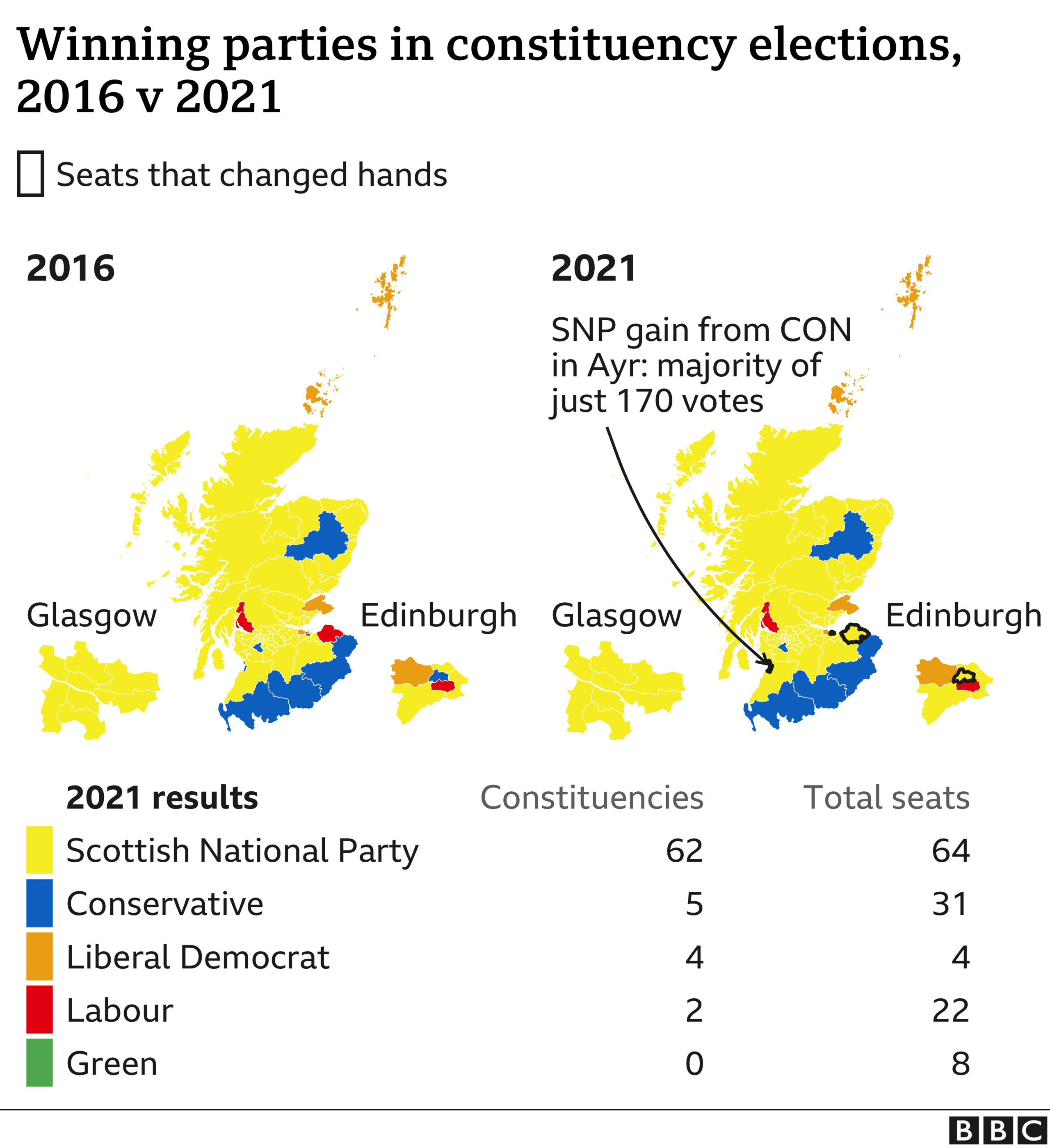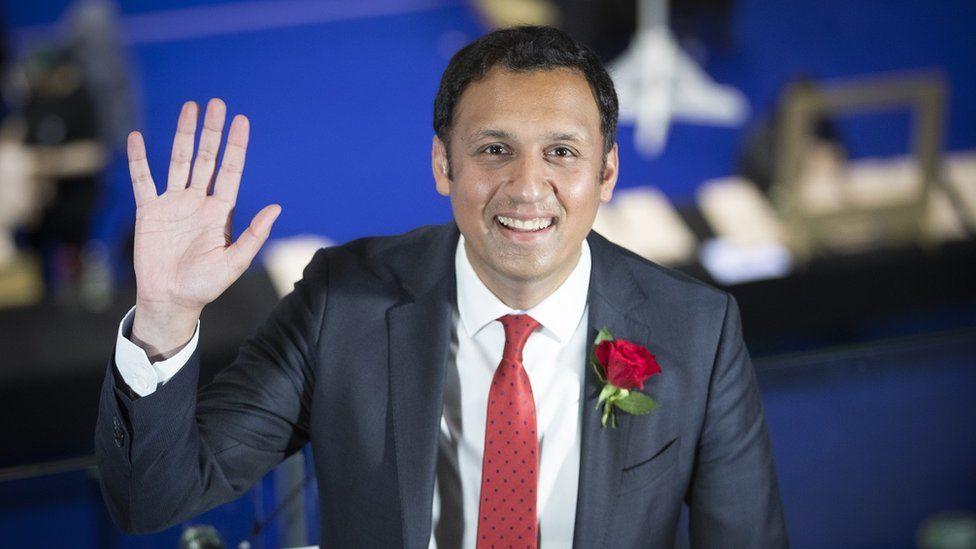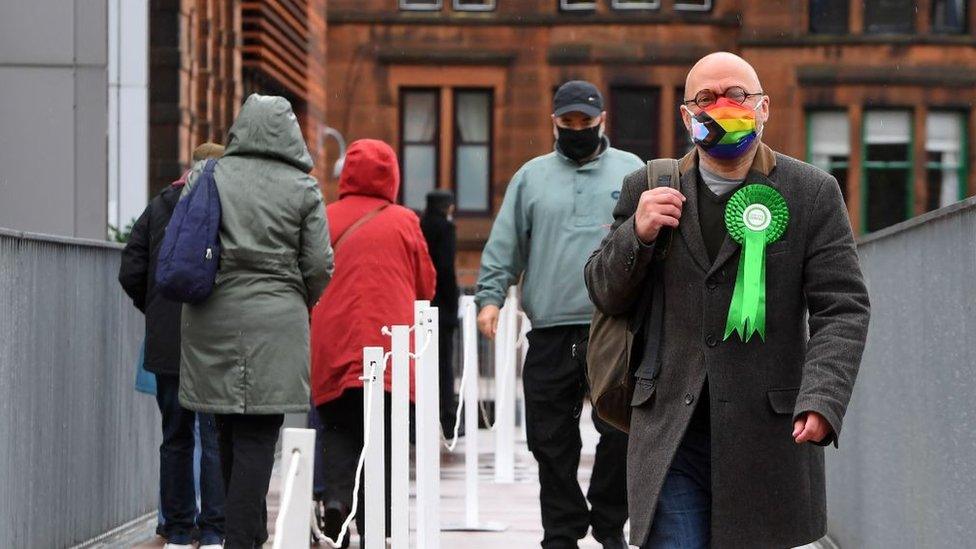Scottish election 2021: The numbers behind the result
- Published

Counting was held across Scotland for two days after Thursday's election
As the dust settles after a marathon two-day count and the winners prepare for life at Holyrood, we look at the facts and figures behind the story of the 2021 Scottish Parliament election.

The SNP has been handed a fresh five-year term in government at Holyrood, their fourth in a row.
By the time it is up in 2026, the party will have been in government for 19 years - and Nicola Sturgeon may be asking for votes from people who were born after she first entered government.
The proportional representation system used for Holyrood elections essentially did its job of producing a parliament which roughly mirrors the way people voted as a whole across Scotland.
The SNP took just under half of the vote, and won just under half of the seats in parliament.

Nicola Sturgeon has been handed a fresh five-year term in government at Holyrood
The Conservatives took 23.5% of the "peach party vote" they based much of their campaigning on, and were rewarded with 24% of the seats.
Labour meanwhile had 19% of the regional list vote and 17% of the seats, while the Greens got 8% of the vote and 6% of the seats.
The Lib Dems took all four of their seats from constituency contests, but still based on list tallies across Scotland ended up with 3% of the seats from 5% of the vote.
Thin margins
This has been an election where not much has changed - only three of the 73 constituencies changed hands, compared to 18 in 2016.
Ranking the results by how narrow the winning margin was, there were 16 seats with a single-digit majority - generally considered a "marginal" seat.
This is the same number as there were before the election, and indeed 10 of them are the very same seats. We may spend election night in 2026 talking about Eastwood, Aberdeenshire West and Dumbarton all over again.

The difference is that after 2016, nine of the 10 most marginal seats were SNP targets. Now, only three are - and they are defending the other seven.
It may seem an obvious point given they now hold the lion's share of constituencies, but there are fewer easy targets for Nicola Sturgeon's party in future - and far more wobbly seats to defend, including the country's most marginal in Ayr which they won by just 170 votes.
As previously, these close contests are mostly SNP-Conservative affairs. Labour was not in second place in a single constituency with a single-digit majority before the election, and they only have one now - East Lothian, the seat they lost to the SNP.
This means there is little in the way of obvious target seats for Anas Sarwar to start building towards challenging in 2026.
Safe seats
One striking change between the 2016 and 2021 results was that in Shetland - which has gone from the safest seat in Scotland, with a 44.3% majority to the ninth most marginal, with a cushion of just 6.8%.
These figures exclude the fact there was a by-election midway through the term, but it is still a big shift in a Lib Dem stronghold.
The safest seat now belongs to Shona Robison in Dundee City East with a 41.4% majority - with her Dundee City West neighbour Joe Fitzpatrick in second spot on 40.2%.

Anas Sarwar now has few obvious target seats for Labour at the next election
Finance Secretary Kate Forbes has also constructed something of a fortress in Skye, Lochaber and Badenoch, with the biggest majority in terms of raw votes - 15,861 of them.
Perhaps the rise of tactical voting in this election means we need a new way to talk about "safe" seats, though. Contests have increasingly become a race between the SNP and whichever other party is best placed locally to challenge them.
On that front, there were 29 seats where the SNP won more than 50% of the vote - so much that even if the opposition clubbed together and backed one candidate, they would still not win.
The Conservatives only had one seat with a margin this wide - Ettrick, Roxburgh and Berwickshire - and Labour had none.
Oddly though, the smallest party, the Lib Dems, had three. And their fourth seat was not far behind, on 48.6%. They seem to have become the party of extremes, because they also lost their deposit in 50 of the 73 constituencies, by polling under 5% of the vote.

Kate Forbes' seat in Skye, Lochaber and Badenoch had the biggest majority in terms of raw votes
Smaller parties
While nothing much has changed in the makeup of the parliament, the existing parties rather entrenched their positions.
There was a lot of talk of smaller parties during the campaign, with Alex Salmond launching the Alba Party to great fanfare, but ultimately they barely made a dent in the figures with 1.7% of the regional ballot.
George Galloway's All for Unity group similarly flopped, managing 0.9% of the vote.
And UKIP - now dedicated to shutting down Holyrood - secured just 3,848 list votes, 0.1% of the 2.7m cast around Scotland - and behind the rather more bluntly-titled Abolish the Scottish Parliament Party on 0.3%.

With turnout high and social distancing in place, some Scots - including Patrick Harvie - had to queue outside polling stations
Turnout
One of the big stories across Scotland was how many people came out to vote.
Turnout hit a record high for a Holyrood election, at 63.2%. It was up in every single constituency, and indeed at least half of the registered electorate took part in every seat.
It was over 60% in 54 of the 73 constituencies, and over 70% in four.
The overall figure is ten points up on the average of the five previous Holyrood elections, and well in advance of the previous high of 59% in 1999.
However it still lags behind the levels recorded in recent general elections north of the border - turnout was 68.1% for the Westminster election in December 2019 - and a good way off the massive engagement in the 2014 referendum, which was 84.6%.


